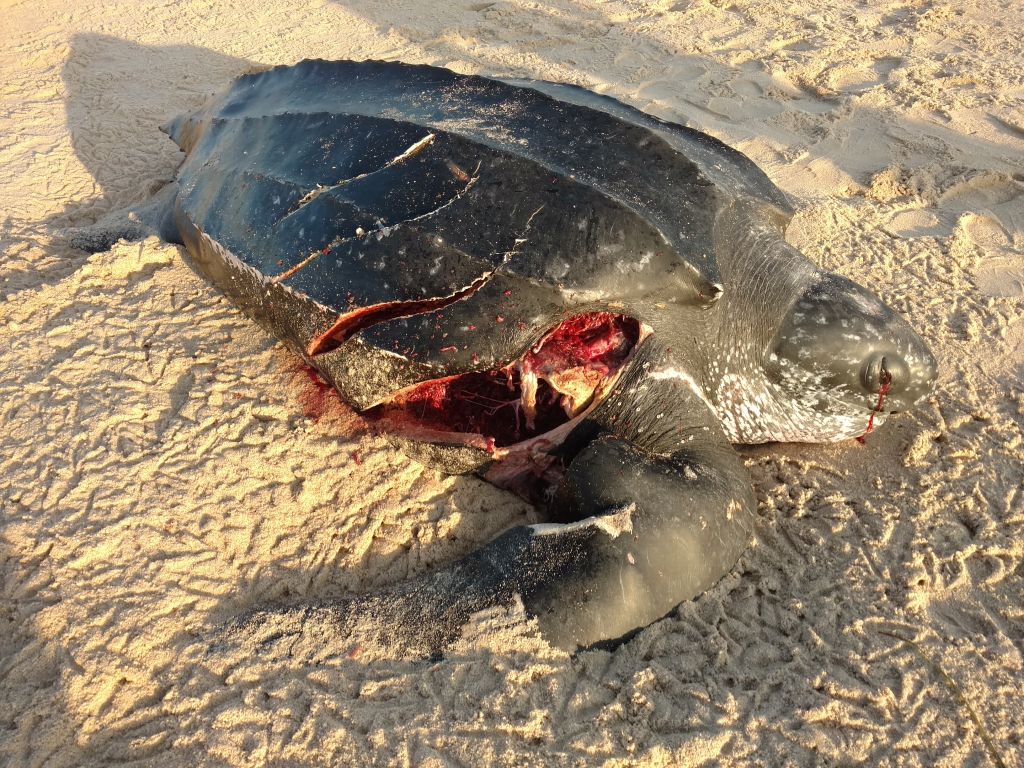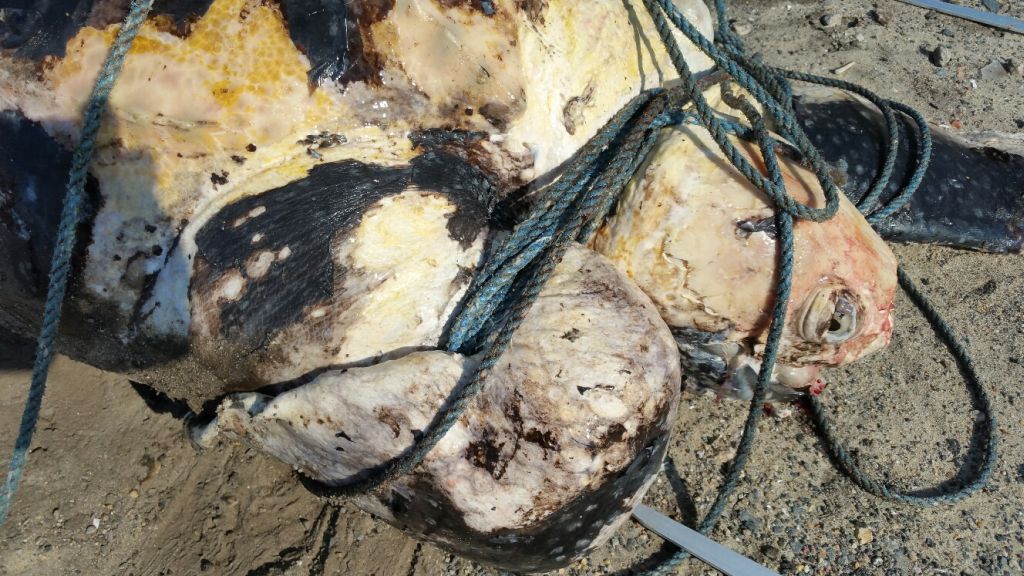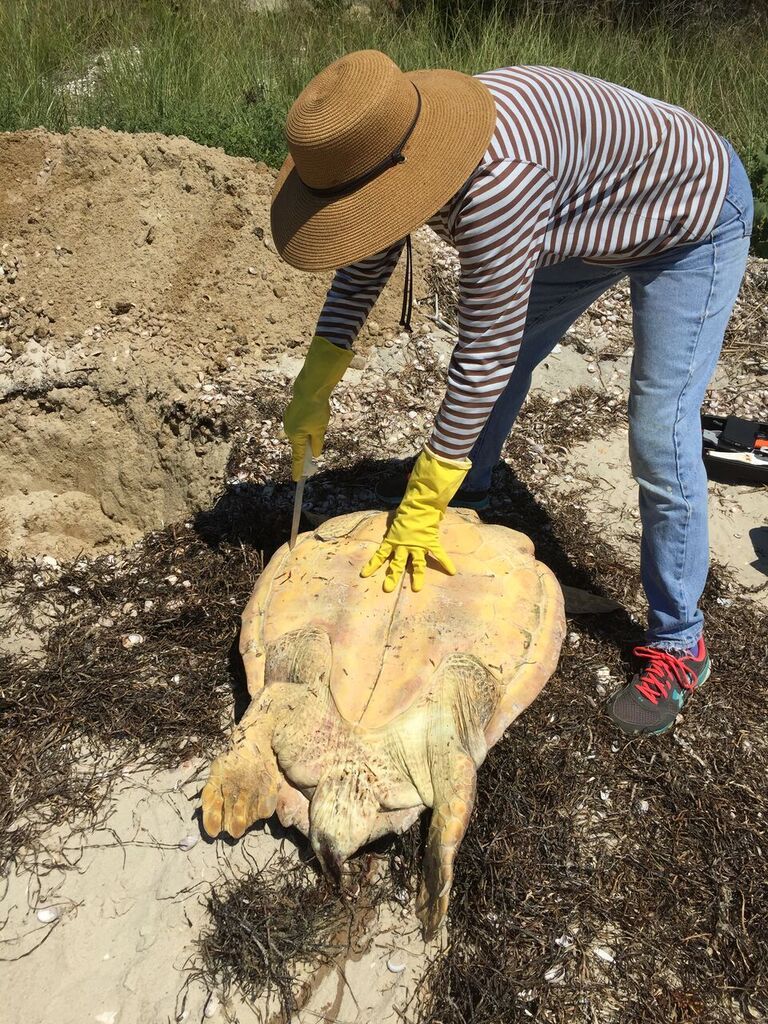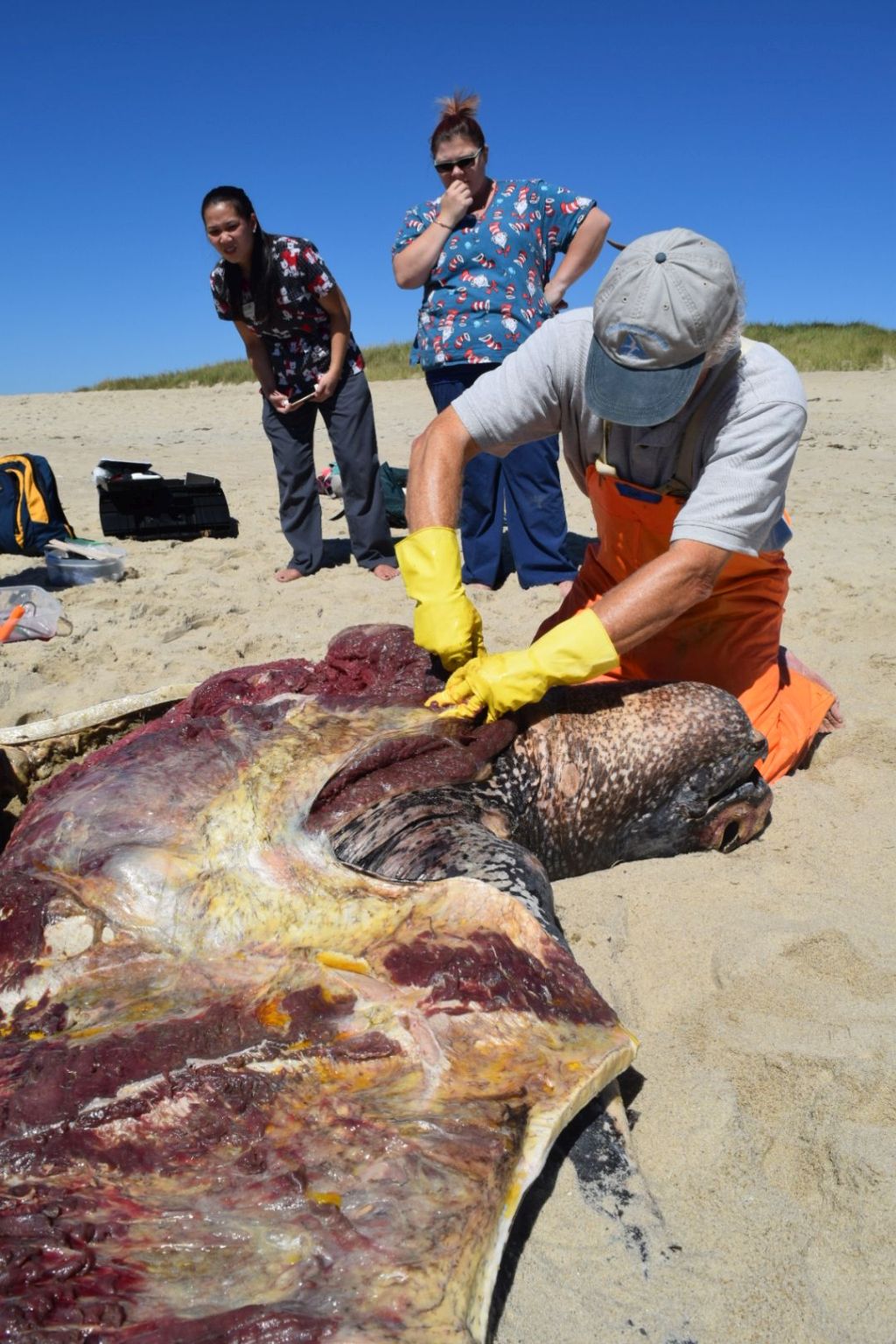All summer and early fall, Wellfleet Bay’s sea turtle team has been busy. Boaters’ sightings of live, free-swimming loggerheads have come in steadily to our sightings website, seaturtlesightings.org. Sightings of leatherbacks, the world’s biggest sea turtles, picked up in mid-August and we’re still getting reports of both species. Kemp’s ridleys and green sea turtles are here, too, but the immature turtles of these species are so small that boaters don’t see or report them very often.

Free swimming leatherback in Nantucket Sound. We love these kinds of sightings reports! (photo courtesy of Chris Waitkun )
All these reports become part of our growing sea turtle sightings database, helping us to understand where and when sea turtles are feeding and passing through our waters. We also share our sightings with colleagues from Woods Hole Oceanographic Institution and National Marine Fisheries Service who are conducting research projects studying sea turtle feeding and migration. Our information helps them locate turtles.
Live sightings of healthy sea turtles are the happier part of our work, but we’re also the federally designated responders for every dead sea turtle reported anywhere in southeastern Massachusetts.

Leatherback killed by a small boat propeller. (photo courtesy of Jim Sener)
These are often tough cases, as cause of death is usually boat strike or entanglement in lobster or conch gear.

Entangled leatherback at Bass River in Yarmouth
We complete a stranding report for each turtle and try to learn as much as possible from each death. This report includes: taking DNA samples (to determine where that turtle was born), making measurements, taking photographs, and often doing a full necropsy. These necropsies on the beach can tell us what the turtle was eating, whether it had a good fat build-up, whether there were any foreign objects in its digestive tract (think plastic), and whether it was male or female, as many of our sea turtles are sub-adults so sex cannot be determined externally.

Sea turtle researcher Karen Dourdeville prepares to necropsy a loggerhead at Scraggy Neck on Buzzards Bay (photo by Andrew Partridge).
Part of our sea turtle stranding response is scanning for a PIT (passive integrated transponder) tag. These tags, about the size of a grain of rice, are the same type inserted by veterinarians into pet cats and dogs for individual identification if that pet is lost, and each tag has a unique sequence of numbers and letters which show up on an electronic scanner. Usually the only chance researchers get to implant one of these tiny tags in a sea turtle is when a female comes ashore to nest on a beach in the tropics or sub-tropics.

Bob Prescott necropsies a stranded leatherback on Madaket Beach, Nantucket. This turtle was PIT tagged, but we’re still researching where and when it was tagged. (photo by Olivia Bourque)
In our sea turtle stranding work this summer, we encountered two PIT tagged leatherbacks. Both had been killed by boat strikes, the one seen above on Nantucket, and another that washed up in Mashpee. Through an international database, we learned that the Mashpee leatherback was, sadly, a reproductive female. She had nested on a beach in eastern Trinidad in 2010 and again on the same beach in 2012. So far, we’ve not been able to learn where the Nantucket leatherback was tagged, but we’re still trying. PIT tags are important to report because they provide crucial “mark and recapture” data for sea turtle research.
We’re running out of good boating weather, but should you find yourself out in the sound or the bay and you spot one of these amazing animals, enjoy the experience, and please let us know!

Loggerhead off Gloucester ( photo courtesy of Amy Warren and Newburyport Whale Watch).
This post was contributed by Wellfleet Bay sea turtle research associate Karen Dourdeville who manages the seaturtlesightings.org web site. Karen responds through the summer to turtle strandings and this fall will be part of the sanctuary’s cold-stun stranding team. She also participates in turtle necropsies at the Woods Hole Oceanographic Institution.

